Paragon Hard Disk Manager - 15 Premium User Guide
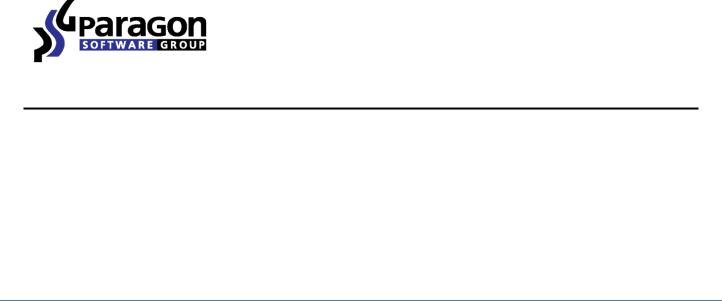
PARAGON Software GmbH
Heinrich-von-Stephan-Str. 5c 79100 Freiburg, Germany
Tel. +49 (0) 761 59018201 Fax +49 (0) 761 59018130
Internet www.paragon-software.com Email sales@paragon-software.com
Hard Disk Manager™ 15 Premium
User Manual
Copyright© 1994-2014 Paragon Software GmbH. All rights reserved.
|
2 |
Contents |
|
Introduction .......................................................................................................................... |
7 |
What’s New in Hard Disk Manager 15 ......................................................................................................... |
7 |
Product Components............................................................................................................. |
8 |
Features Overview................................................................................................................. |
8 |
Features ..................................................................................................................................................... |
8 |
User Friendly Fault Minimizing Interface................................................................................................................................ |
8 |
Backup Facilities...................................................................................................................................................................... |
8 |
Restore Facilities................................................................................................................................................................... |
10 |
Copy Facilities ....................................................................................................................................................................... |
10 |
Virtualization Facilities.......................................................................................................................................................... |
11 |
Boot Management Facilities ................................................................................................................................................. |
11 |
Partition/Hard Disk Management Facilities.......................................................................................................................... |
11 |
File System Optimization Facilities ....................................................................................................................................... |
12 |
Wipe Facilities....................................................................................................................................................................... |
12 |
Automatization Facilities ...................................................................................................................................................... |
12 |
Auxiliary Facilities ................................................................................................................................................................. |
12 |
Supported Data Erasure Algorithms ........................................................................................................... |
13 |
Supported Technologies............................................................................................................................. |
13 |
Supported Virtualization Software ............................................................................................................. |
14 |
Supported virtual hard drive types....................................................................................................................................... |
14 |
Supported virtual machines for P2V scenarios..................................................................................................................... |
15 |
Supported File Systems .............................................................................................................................. |
15 |
Supported Media....................................................................................................................................... |
15 |
Getting Started.................................................................................................................... |
15 |
System Requirements ................................................................................................................................ |
16 |
Installation ................................................................................................................................................ |
17 |
First Start................................................................................................................................................... |
18 |
Building Recovery Media............................................................................................................................ |
19 |
Booting from the Linux/DOS Recovery Media............................................................................................. |
19 |
Startup .................................................................................................................................................................................. |
19 |
Boot menu ............................................................................................................................................................................ |
20 |
Booting from the WinPE Recovery Media ................................................................................................... |
22 |
Startup .................................................................................................................................................................................. |
22 |
Copyright© 1994-2014 Paragon Software GmbH. All rights reserved.
3 |
|
Basic Concepts..................................................................................................................... |
24 |
System and Data Protection....................................................................................................................... |
24 |
File Backup versus Sector Backup......................................................................................................................................... |
24 |
Backup Types ........................................................................................................................................................................ |
25 |
Backup Storage ..................................................................................................................................................................... |
27 |
Adaptive Restore .................................................................................................................................................................. |
28 |
System Virtualization ................................................................................................................................. |
29 |
Paragon Hot Processing & Volume Shadow Copy Service............................................................................ |
30 |
Offline versus Online Data Processing.................................................................................................................................. |
30 |
Paragon Hot Processing Technology .................................................................................................................................... |
30 |
Volume Shadow Copy Service .............................................................................................................................................. |
31 |
pVHD Support............................................................................................................................................ |
31 |
Agentless Protection of Hyper-V Guest Machines ....................................................................................... |
31 |
Dynamic Disks............................................................................................................................................ |
32 |
GPT versus MBR......................................................................................................................................... |
33 |
uEFI Boot Challenges.................................................................................................................................. |
33 |
Apple Boot Camp ....................................................................................................................................... |
34 |
64-bit Support............................................................................................................................................ |
34 |
Copy Operations ........................................................................................................................................ |
34 |
Drive Partitioning....................................................................................................................................... |
35 |
Data Sanitization........................................................................................................................................ |
35 |
Data Security Standards ............................................................................................................................. |
36 |
Scheduling ................................................................................................................................................. |
37 |
Windows BitLocker .................................................................................................................................... |
37 |
Windows Components ........................................................................................................ |
38 |
Interface Overview .................................................................................................................................... |
38 |
General Layout...................................................................................................................................................................... |
38 |
Tool Button ........................................................................................................................................................................... |
39 |
Ribbon Panel......................................................................................................................................................................... |
39 |
Set View Button .................................................................................................................................................................... |
39 |
Virtual Operations Bar .......................................................................................................................................................... |
40 |
Express Mode Button ........................................................................................................................................................... |
40 |
Disk Map ............................................................................................................................................................................... |
40 |
Disk and Partitions List.......................................................................................................................................................... |
41 |
Context-sensitive Menu........................................................................................................................................................ |
42 |
Copyright© 1994-2014 Paragon Software GmbH. All rights reserved.
|
4 |
Properties Panel.................................................................................................................................................................... |
42 |
Status Bar.............................................................................................................................................................................. |
43 |
Settings Overview...................................................................................................................................... |
43 |
Application Section ............................................................................................................................................................... |
44 |
Backup Section...................................................................................................................................................................... |
46 |
Partitioning Section .............................................................................................................................................................. |
51 |
Wipe Section......................................................................................................................................................................... |
54 |
Include/Exclude Section........................................................................................................................................................ |
56 |
E-mail Notifications and Logging Section ............................................................................................................................. |
60 |
Viewing Disk Properties ............................................................................................................................. |
62 |
Viewing Image Properties .......................................................................................................................... |
62 |
Using the Restore Wizard ..................................................................................................................................................... |
62 |
Using the Archive Database.................................................................................................................................................. |
66 |
Data Backup and Rescue ............................................................................................................................ |
67 |
Creating Backup Images........................................................................................................................................................ |
67 |
Restoring System and Data................................................................................................................................................... |
70 |
Copy Tasks................................................................................................................................................. |
75 |
Cloning Hard Disks ................................................................................................................................................................ |
75 |
Cloning Partitions.................................................................................................................................................................. |
78 |
Boot Management ..................................................................................................................................... |
79 |
Partition Management............................................................................................................................... |
80 |
Basic Partitioning Operations ............................................................................................................................................... |
81 |
Advanced Partitioning Operations........................................................................................................................................ |
89 |
Changing Partition Attributes ............................................................................................................................................. |
101 |
Hard Disk Management ........................................................................................................................... |
104 |
Converting Dynamic MBR to Basic ..................................................................................................................................... |
104 |
Converting GPT to Basic MBR ............................................................................................................................................. |
105 |
Converting Basic MBR to GPT............................................................................................................................................. |
105 |
Updating MBR..................................................................................................................................................................... |
106 |
Changing Primary Slot......................................................................................................................................................... |
106 |
Wipe Tasks .............................................................................................................................................. |
108 |
Task Scheduling ....................................................................................................................................... |
111 |
Setting a Timetable............................................................................................................................................................. |
111 |
Managing Tasks .................................................................................................................................................................. |
112 |
Creating a Scheduled Task .................................................................................................................................................. |
114 |
Copyright© 1994-2014 Paragon Software GmbH. All rights reserved.
5 |
|
Scripting .................................................................................................................................................. |
114 |
Extra Functionality................................................................................................................................... |
116 |
View Partition/Hard Disk Properties................................................................................................................................... |
116 |
Volume Explorer ................................................................................................................................................................. |
117 |
File Transfer Wizard............................................................................................................................................................ |
118 |
Mount Partition .................................................................................................................................................................. |
120 |
Mount Archive .................................................................................................................................................................... |
121 |
Defragment MFT................................................................................................................................................................. |
122 |
Compact MFT...................................................................................................................................................................... |
123 |
Test Surface ........................................................................................................................................................................ |
123 |
Check File System Integrity................................................................................................................................................. |
124 |
Check Archive Integrity....................................................................................................................................................... |
124 |
Check Recovery Discs.......................................................................................................................................................... |
128 |
Edit/View Sectors................................................................................................................................................................ |
128 |
Send Log Files...................................................................................................................................................................... |
129 |
View Logs ............................................................................................................................................................................ |
130 |
Typical Scenarios ............................................................................................................... |
131 |
Backup Scenarios ..................................................................................................................................... |
131 |
Creating the Backup Capsule .............................................................................................................................................. |
131 |
New Backup Format............................................................................................................................................................ |
133 |
Legacy Backup Format........................................................................................................................................................ |
150 |
Hyper-V Guest Protection................................................................................................................................................... |
180 |
Recovery Scenarios .................................................................................................................................. |
186 |
New Backup Format............................................................................................................................................................ |
186 |
Legacy Backup Format........................................................................................................................................................ |
193 |
Hyper-V Guest Recovery..................................................................................................................................................... |
216 |
Fixing Boot Problems without Restore ............................................................................................................................... |
218 |
Retrieving/Transferring Individual Files and Folders.......................................................................................................... |
223 |
Resize Scenarios....................................................................................................................................... |
230 |
Creating a new partition to detach operating system from the rest of data ..................................................................... |
230 |
Increasing size of a system partition by taking unused space of an adjacent partition..................................................... |
231 |
Increasing size of a system partition by taking unused space from any other................................................................... |
232 |
Increasing size of a system partition by taking unused space of an adjacent logical partition.......................................... |
236 |
Separating OS from media data.......................................................................................................................................... |
237 |
Merging a system partition with an adjacent logical partition........................................................................................... |
239 |
Shrinking a system partition to increase size of a data partition ....................................................................................... |
241 |
Copyright© 1994-2014 Paragon Software GmbH. All rights reserved.
6 |
|
Resizing partitions of Apple Boot Camp ............................................................................................................................. |
244 |
Creating Dual Boot Systems ..................................................................................................................... |
246 |
Windows Vista + Windows XP ............................................................................................................................................ |
246 |
Windows XP + Windows Vista ............................................................................................................................................ |
251 |
System Migration Scenarios ..................................................................................................................... |
253 |
Migrating Windows OS to a solid state drive (Migrate OS to SSD) .................................................................................... |
253 |
Migrating system to a new HDD (up to 2.2TB in size) ........................................................................................................ |
256 |
Using 2.2TB+ HDD as internal data storage in Windows XP............................................................................................... |
258 |
Making system bootable on different hardware (P2P Adjust OS)...................................................................................... |
260 |
Virtualizing the current system (P2V Copy)........................................................................................................................ |
267 |
Virtualizing system from its backup image (P2V Restore).................................................................................................. |
270 |
Creating an empty virtual disk (Create VD) ........................................................................................................................ |
275 |
Making Windows Vista/7 backup bootable on virtual hardware (P2V Adjust OS)............................................................. |
277 |
Connecting a virtual disk (Connect VD) .............................................................................................................................. |
280 |
Repartitioning a virtual disk................................................................................................................................................ |
285 |
Exchanging data between physical and virtual environments ........................................................................................... |
288 |
Copying data from a parent virtual disk to one of its snapshots........................................................................................ |
290 |
Migrating from one virtual environment to another (V2V)................................................................................................ |
290 |
Migrating from a virtual environment to physical (V2P).................................................................................................... |
290 |
Migrating a Windows 7 vhd................................................................................................................................................ |
291 |
Hard Disk Utilization ................................................................................................................................ |
291 |
Extra Scenarios for WinPE ........................................................................................................................ |
293 |
Adding specific drivers........................................................................................................................................................ |
293 |
Configuring network ........................................................................................................................................................... |
294 |
Saving log files..................................................................................................................................................................... |
297 |
How to Work with Bitlocked Volumes ...................................................................................................... |
298 |
In Windows ......................................................................................................................................................................... |
299 |
In WinPE.............................................................................................................................................................................. |
300 |
Troubleshooter.................................................................................................................. |
302 |
Glossary............................................................................................................................. |
303 |
Copyright© 1994-2014 Paragon Software GmbH. All rights reserved.

7
Introduction
Paragon Hard Disk Manager™ 15 Premium is an integrated set of powerful tools that is specially designed to tackle most of the problems you might face while using PC. Its functionality covers all aspects of a computer life cycle beginning from carrying out all the necessary partitioning operations to install the system from scratch and providing its data reliable protection to secure utilization of an outdated hard disk.
In this manual you will find the answers to many of the technical questions, which might arise while using the program.
Our company is constantly releasing new versions and updates to its software, that's why images shown in this manual may be different from what you see on your screen.
What’s New in Hard Disk Manager 15
Agentless protection of Hyper-V guest machines. Unlike traditional backup tools designed to work with physical machines, our product can operate at the virtualization layer, employing MS VSS (Volume Shadow Copy Service) to agentlessly backup/restore any guest machine of Hyper-V. Thus our solution doesn’t need an agent on a target virtual machine to create its point-in-time copy including its configuration, operating system, apps, etc.
Embedded Recovery Media Builder (RMB) 3.0. Instead of two utilities downloaded from Paragon's website (BMB and RMB), the new RMB 3.0 is now embedded into the product. Combining the best of the two utilities, it can boast more options, usability, and stability:
-Prepares Linux or WinPE-based bootable environment on a USB thumb drive or in an ISO image;
-Doesn’t obligatory require Windows Assessment and Deployment Kit (ADK) or Automated Installation Kit (WAIK) on Windows 7 and later platforms;
-Can build WinPE-based media on Windows XP, Vista, Server 2003 if there’s WAIK installed in the system;
-Allows injecting additional drivers for storage devices, network controllers, USB controllers, or system during setup;
-Enables to set up a network connection with a pre-mounted network share during setup;
-Prepares hybrid (both, uEFI and BIOS compatible) 64-bit recovery environment on flash or in an ISO image.
File-level backup/restore for virtual containers (pVHD, VHD, VHDX, VMDK). As promised, Paragon's innovative backup imaging technology has been further improved and now opens up the option of creating file-level virtual containers (full, incremental, as well as file complements), thus offering users rock-stable, high-performance technology to protect system and data not only on sector-level, but file-level as well. This means that the old PBF format will eventually leave the scene.
Refactored P2V Restore Wizard. Instead of the old PBF-based backup images, you can now use virtual containers (pVHD, VHD, VHDX, VMDK) to do P2V migration directly out of backup images. The use of virtual containers has enabled to significantly improve performance and usability for this type of migration operations.
Wiping SSD (Solid State Drive). As you know SSD stores data differently from hard disks, thus existing disk sanitization techniques originally used for HDDs don't work on SSDs because the internal architecture of an SSD is very different from that of a hard disk. Reliable SSD sanitization requires built-in, verifiable sanitize operations. After some research on the issue, our company has improved our disk wiping technology and can now guarantee irreversible secure data destruction on SSD storage devices.
Copyright© 1994-2014 Paragon Software GmbH. All rights reserved.

8
This feature is only available for the Linux recovery environment at the moment.
Support of Hyper-V 2008 R2, 2012 R1, 2012 R2 (Generation 1 and 2) for P2V scenarios.
Predefined views. The Windows 8 like streamlined, tile-oriented interface has been enhanced by predefined views, which enable to adjust the working environment to particular customer needs.
Product Components
In order to cope with different tasks, the product contains several components:
Windows based set of utilities is the crucial part of the product. With the help of an easy to use launcher you may find and run tasks of any complexity in the field of data and system protection, hard disk partitioning and cloning, etc.
Linux/DOS based recovery environment is a multi-platform bootable media that enables to run utilities under Linux or PTS DOS, and that way to get access to your hard disk for maintenance or recovery purposes. Both platforms have their strong sides, for instance Linux can boast support of FireWire (i.e. IEEE1394) or USB devices. It enables to burn CD/DVD discs. However there can be some difficulties with detecting new hardware. DOS in its turn has no problems of that kind but is limited in features. The Linux/DOS recovery environment requires no installation and can be of great help when the system fails to boot. Besides it offers a Windows XP like environment.
WinPE based recovery environment. Especially for keen followers of Windows, our product offers the option to prepare a WinPE based bootable media. Unlike the Linux/DOS recovery environment it can boast an excellent hardware support and the same interface as the Windows version can. However its system requirements are much tougher.
Features Overview
This chapter dwells upon key benefits and technical highlights of the product.
Features
Let us list some of the features:
User Friendly Fault Minimizing Interface
Graphical representation of the data to gain a better understanding.
A handy Launcher to easily find and run the required tasks.
Comprehensive wizards to simplify even the most complex operations.
A context sensitive hint system for all functions of the program.
Previewing the resulting layout of hard disks before actually executing operations (so-called virtual operations).
Backup Facilities
Archive Database to help the user easily manage backup images (get properties, add, delete, mount, etc.).
Copyright© 1994-2014 Paragon Software GmbH. All rights reserved.

9
This feature is only available for the Windows installation of the program.
Available location for backup images:
-Backup to local mounted partitions.
-Backup to local unmounted (without drive letter assigned) partitions.
-Backup to an external mounted storage to provide for a higher level of data protection and system independence.
-Backup to a special secured place on the hard disk called the Backup Capsule that has an independent system layout (e.g. a separate partition) and will stay operable should the active file system be damaged. To avoid an accidental removing or unauthorized access of the backup data, this partition is hidden and thus cannot be mounted in the operating system.
-Backup to external media (CD/DVD) to guarantee a high level of data protection as long as the backup media is kept secure.
-Backup to a network drive to stand a better chance of success in case of a hard disk failure.
-Backup to an FTP/SFTP server to provide a new level of system and data protection.
Bootable Backup Capsule to get the choice to launch the Linux or PTS DOS recovery environment every time you start up the computer. With its help you will be able to run utilities under Linux or PTS DOS, and that way to get access to your hard disk for maintenance or recovery purposes.
For PBF images:
Smart Backup Wizard to secure system and data with the minimal efforts possible. With a unique intelligent work algorithm and a highly intuitive user interface, you can easily back up exactly what you need - the whole system, e-mail databases (MS Outlook, Express, Windows Mail) media files or office documents of the My Documents folder, or any other files and folders.
Differential backup to a sector image to only archive changes since the last full sector-based image, thus considerably saving the backup storage space. To restore this kind of backup you will require a full image and one of its differentials.
Incremental backup to a sector image is a further way of optimizing the process of disk imaging. Unlike differentials, it may not only contain data changed since the time of creating a full sector-based archive, but one of its increments as well, thus allowing to save more time and the backup storage. Introduction of a special index file that stores backup meta-information minimizes time and resources to create this type of archives.
Incremental backup to a file image to only archive changes since the last full or incremental file-based image. An incremental image is smaller and takes less time to create, but you will require the initial full image and all of its increments to restore the latest point of this kind of backup.
File backup to a sector image. It is a unique technology on the market so far that bridges two principally different approaches of the data backup: the file-based backup and the disk imaging backup. With its help you can now create a sector-based backup of your system to get it back on track in minutes in case of a virus attack or a hardware malfunction and then just make file-based incremental images to the previously created sectorbased backup to keep updated only information that is critical for you. Thus you will considerably save your system resources.
Copyright© 1994-2014 Paragon Software GmbH. All rights reserved.
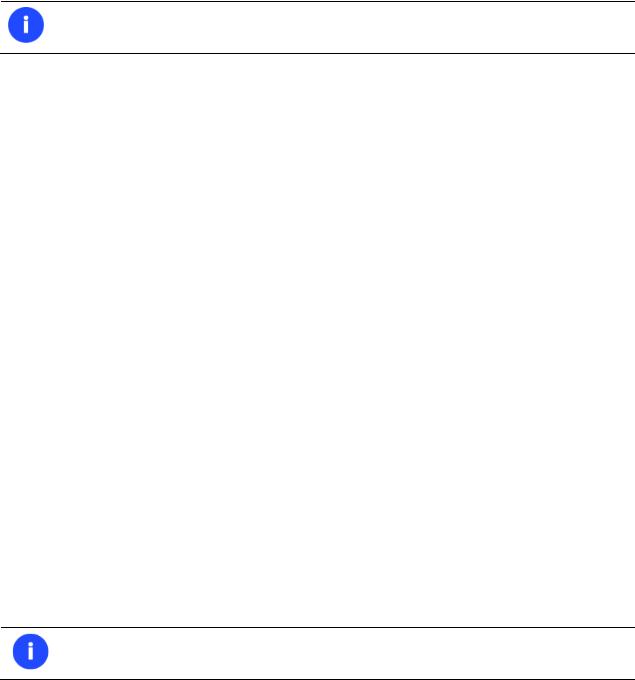
10
Cyclic Backup Wizard to automate the backup of separate partitions. It is an ideal option if you want to establish a self-acting data protection system.
This feature is only available for the Windows installation of the program.
Synthetic backup to change any property (merge a given differential image with its full image, split/un-split, compress/de-compress, etc.) of an existing backup image without carrying out a physical backup operation.
For Hyper-V guest machines:
Hyper-V Backup Wizard to agentlessly back up entire virtual machines (online/offline) hosted by Hyper-V. Our product supports any guest machines supported by Hyper-V (Windows, Linux, etc.).
Hyper-V Incremental Backup Wizard to create incremental backup chains based on the base image.
Hyper-V Restore Wizard to restore a previously backed up virtual machine to a new location according to a certain time stamp.
For virtual containers:
Backup to VD Wizard to protect separate partitions or entire hard disks.
Incremental Backup to VD Wizard to create incremental backup chains based on the full image.
File Complement to VD Wizard to create a file-level incremental update to a sector-level virtual container.
Retention Wizard for VD to automate the backup of separate partitions or entire hard disks. It is an ideal option if you want to establish a self-acting data protection system.
Restore Facilities
Restore an entire disk, separate partitions or only files you need from the previously created backup image (for PBF and virtual containers).
Restore with Shrink to restore a backup image to a free block of smaller size taking into account only the amount of actual data of the image.
Adaptive Restore to successfully migrate a Windows physical system to a different hardware platform (P2P) by allowing automatic injection of all required drivers and the other actions crucial for a migration of this kind.
This feature is only available for the bootable recovery environment.
Copy Facilities
Migrate OS to SSD to move any Windows OS since XP from a regular hard disk to a fast SSD (Solid State Drive) even of a smaller capacity, thanks to advanced data exclusion capabilities.
Partition/hard disk copy to successfully transfer all on-disk information including standard bootstrap code and other system service structures, thus maintaining the operating system’s working capability.
Copyright© 1994-2014 Paragon Software GmbH. All rights reserved.

11
Copy functionality can also be used as an alternative way of data protection.
Virtualization Facilities
Connect VD to connect a virtual disk as if it’s an ordinary physical disk, thus opening up all functionality available for physical disks to virtual.
P2V Copy to migrate a Windows physical system to a virtual environment in the online mode.
P2V Restore to migrate a Windows physical system backed up with a Paragon disaster recovery tool to a virtual environment.
P2V Adjust to recover the startup ability after unsuccessful virtualization with a 3rd party tool.
Create VD to create an empty virtual disk or with specific data of one of the supported virtualization vendors.
Virtualization is the latest trend in the system migration, protection, and evaluation.
Boot Management Facilities
Boot Manager Setup Wizard to easily manage several operating systems on one computer.
Partition/Hard Disk Management Facilities
Basic functions for initializing, partitioning and formatting hard disks (create, format, delete). Instead of the standard Windows disk tools, the program supports all popular file systems.
Express Create Partition Wizard to create a new partition in the most appropriate place of a hard disk, format it to NTFS and then make it available in the system by assigning a drive letter.
Split Partition Wizard helps you separate OS and data or different types of data by splitting one partition to two different partitions of the same type and file system.
Merge Partitions Wizard to consolidate the disk space, which originally belongs to two adjacent partitions (NTFS, FAT16/FAT32), into a single, larger partition.
Redistribute Free Space Wizard to increase free space on one partition by up-taking the on-disk unallocated space and the unused space of other partitions.
Express Resize Partitions Wizard to increase free space on one partition by up-taking the unused space of an adjacent partition of a hard disk (including partitions of Apple Boot Camp).
NTFS hot resize upward to enlarge an NTFS partition (system, locked) without rebooting Windows and interrupting its work.
Convert a file system (FAT16/32, NTFS, Apple HFS) without reformatting.
Mount a partition (assign a drive letter) of any file system type to make it available for your operating system.
Modify file system parameters (make active/inactive, hide/unhide, etc.).
Install New OS Wizard to make a system ready to install a new operating system.
Undelete Partitions Wizard to recover an accidentally deleted partition.
Copyright© 1994-2014 Paragon Software GmbH. All rights reserved.
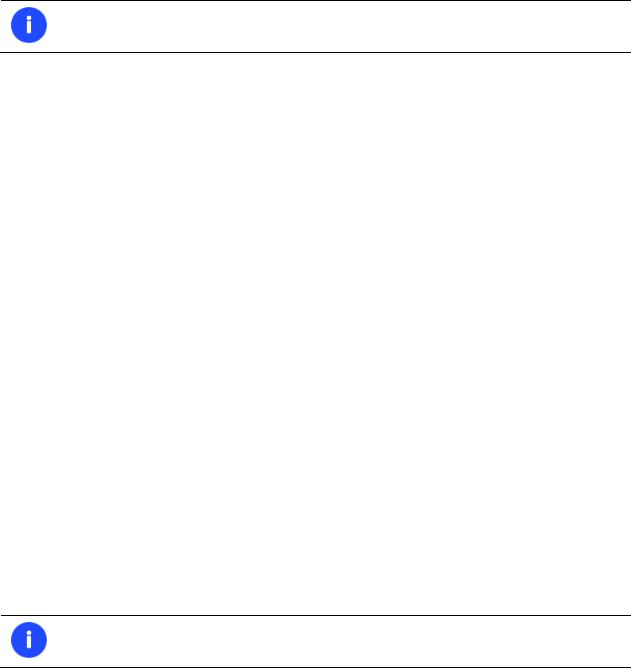
12
File System Optimization Facilities
MFT defragmentation and shrinking to improve performance of NTFS.
Wipe Facilities
Data wiping to successfully destroy all on-disk information including the standard bootstrap code and other system service structures.
Free space clearing to destroy any remnants of deleted files/directories left on disk without affecting the used data.
Automatization Facilities
Task scheduling to automate routine operations. It can be particularly effective when you have to repeat a sequence of actions on a regular basis.
Scheduling is only available for the Windows installation of the program.
Scripting to make the program create a script of any set of operations you need. Besides support of all operations available in the interactive mode, the unattended mode provides some additional features, such as conditional execution, subroutines, repeatable iterations, disk/partition properties analysis, errors management, etc.
Auxiliary Facilities
GPT Loader is a special system driver to allow use of all space of modern ultra high capacity drives (larger than 2.2TB) on systems that don't support it.
Conversion of basic MBR disks to basic GPT to enjoy all benefits of the newest partitioning scheme with minimal effort.
File Transfer Wizard to make such operations as transferring of files/directories or burning of them to CD/DVD as easy and convenient as possible. Providing access to Paragon backups as regular folders, it may also help to replace corrupted data from a previously created image in case of an operating system failure.
Volume Explorer is a handy tool when you have different file systems on the disk, whether they contain an operating system or just data. Volume Explorer will let you explore a file system of any type and provide access to the necessary files and directories regardless of their security attributes.
Check Integrity Wizards to check integrity of created .pbf images and virtual containers. The function allows distinguishing between valid and corrupted images before using them.
Network Configuration Wizard to establish a network connection on a bootable recovery media either to save a backup of a partition/hard disk or just several files on a network computer or retrieve a previously made backup from a network computer for recovery purposes.
Boot Corrector to fix most of the system boot problems that can be a result of a human factor, program error or a boot virus activity.
Boot Corrector is only available for the bootable recovery environment.
Copyright© 1994-2014 Paragon Software GmbH. All rights reserved.

13
Supported Data Erasure Algorithms
US DoD 5220.22-M
US Navy standards NAVSO P-5239-26
British HMG Infosec Standard No.5
German VSItR Standard
Australian ASCI 33
Russian GOST R 50739-95
Peter Gutmann's algorithm
Bruce Schneier's algorithm
Paragon's algorithm
Custom algorithm
To know more on the subject, please consult the Data Security Standards section.
Supported Technologies
Along with using innovative technologies from outside, Paragon has developed a number of its own original technologies that make its products unique and attractive for customers:
Paragon Hot Backup™ technology to back up locked partitions and hard disks under Windows NT+ family operating systems providing both high operating efficiency as well as low hardware requirements.
Paragon Hot Copy™ technology to copy locked partitions and hard disks under Windows NT+ family operating systems providing both high operating efficiency as well as low hardware requirements.
Paragon Adaptive Restore™ technology to successfully migrate a Windows physical system to a different hardware platform (P2P).
Paragon Power Shield™ technology to provide data consistency in case of a hardware malfunction, power outages or an operating system failure.
Paragon UFSD™ technology to browse partitions of any file system including hidden and unmounted, modify and copy files and folders, etc.
Paragon Hot Resize™ technology to enlarge NTFS partitions (system, locked) without rebooting Windows and interrupting its work.
Paragon Restore with Shrink™ technology to restore a backup image to a free block of smaller size taking into account only the amount of actual data of the image.
Paragon Smart Partition™ technology to securely perform hard disk partitioning operations of any complexity.
Paragon BTE™ technology to set tasks for execution during the system restart, thus saving from the need to use a bootable media when modifying system partitions.
Paragon VIM™ (Virtual Image Management) technology that enables Paragon products work with virtual disks as though they are physical hard disks.
Copyright© 1994-2014 Paragon Software GmbH. All rights reserved.
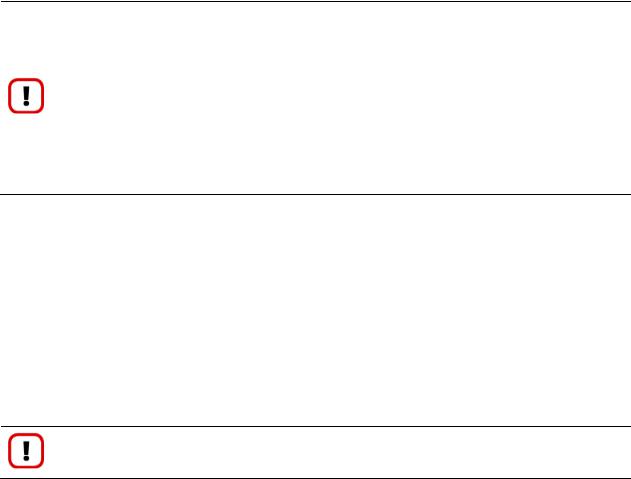
14
Microsoft Volume Shadow Copy Service (VSS) to provide the copy/backup infrastructure for the Microsoft Windows XP/Vista/7/Server 2003/2008 operating systems. It offers a reliable mechanism to create consistent point-in-time copies of data known as shadow copies. Developed by Microsoft in close cooperation with the leading copy/backup solution vendors on the market, it is based on a snapshot technology concept.
Microsoft Dynamic Disk (simple, spanned, striped, mirrored, RAID-5) to offer more management flexibility without the partition limitation of basic disks. Dynamic storage can be particularly beneficial for large-scale businesses when dealing with many physical hard disks involving complex setup.
GUID Partition Table (GPT). It is the next generation of a hard disk partitioning scheme developed to lift restrictions of the old MBR. GPT disks are now supported by Windows Vista/7, Server 2008, Mac OS X and Linux.
Supported Virtualization Software
For remote connection to virtual hard drives
VMware ESX 4.x and higher
VMware ESX 5.x and higher
VMware ESXi 4.x and higher
VMware ESXi 5.x and higher
The maximum number of simultaneously connected virtual disks is limited:
For ESX 4.x – 9 direct connections or 27 through vCenter Server;
For ESX 5.x – 9 direct connections or 27 through vCenter Server;
For ESXi 4.x – 11 direct connections or 23 through vCenter Server;
For ESXi 5.x – depends on the workload of the host’s hardware resources.
VMware products with prohibited vStorage API (Freeware ESXi, etc.) are not supported.
For direct access to virtual hard drives
Microsoft Virtual PC 2007
Microsoft Windows Virtual PC
Microsoft Hyper-V R1/R2
Oracle Virtual Box 1.0-4.x
VMware Player
VMware Workstation
VMware Fusion
Snapshot disks of Oracle VirtualBox are not supported.
Supported virtual hard drive types
VMware - Virtual Machine Disk Format (VMDK)
Microsoft - Virtual Hard Disk (VHD, VHDX)
Copyright© 1994-2014 Paragon Software GmbH. All rights reserved.

15
Oracle - Virtual Desktop Image (VDI)
Paragon’s backups (PBF/pVHD)
Supported virtual machines for P2V scenarios
Microsoft Virtual PC
Microsoft Hyper-V 2008
Microsoft Hyper-V 2012 R1
Microsoft Hyper-V 2012 R2 (Generation 1 and 2)
VMware Workstation
VMware Fusion
VMware ESX Server
Oracle VirtualBox 4.0
Supported File Systems
Full read/write access to FAT16/FAT32 partitions.
Full read/write access to NTFS (Basic Disks) under Windows, Linux and PTS DOS. Compressed NTFS files are also supported.
Full read/write access to Ext2FS/Ext3FS/Ext4FS partitions.
Full read/write access to reFS partitions.
Limited read/write access to Apple HFS+ partitions.
Unfortunately, support of non-Roman characters for the HFS+ file system is unavailable at the moment. The company is about to implement it in the nearest future.
Supported Media
Support of both MBR and GPT hard disks (2.2TB+ disks included)
IDE, SCSI and SATA hard disks
SSD (Solid State Drive)
AFD (Advanced Format Drive)
Non-512B sector size drives
CD-R, CD-RW, DVD-R, DVD+R, DVD-RW, DVD+RW, DVD-R, DVD+R double layer and also Blu-ray discs
FireWire (i.e. IEEE1394), USB 1.0, USB 2.0, USB 3.0 hard disks
PC card storage devices (MBR and GPT flash memory, etc.)
Getting Started
In this chapter you will find all the information necessary to get the product ready to use.
Copyright© 1994-2014 Paragon Software GmbH. All rights reserved.

16
System Requirements
For the Windows installation package
Windows XP SP3
Windows Server 2003 SP2
Windows Vista
Windows Server 2008
Windows 7
Windows 8
Windows 8.1
Windows Server 2008 R2
Windows SBS 2011
Windows Server 2012
Windows Server 2012 R2
Additional requirements:
To install and run the product the target OS should have Visual Studio C++ 2010 Runtime Library installed (comes with the installation package – you will be prompted to install it, if it’s not been found in the system).
To install and run the product the target OS should have Microsoft .NET 4.0 or later installed (you should download and install it yourself).
If you installing our product on Windows Server 2003 SP2, you additionally need to have Visual Studio C++ 2005 SP1 Runtime Library installed (you should download and install it yourself).
You can download Microsoft .NET 4.0 from Microsoft’s website: http://www.microsoft.com/downloads/details.aspx?FamilyID=0a391abd-25c1-4fc0-919f- b21f31ab88b7&displaylang=en
During the installation additional free space (up to 1GB) will be required.
For the Linux bootable environment
Intel Pentium CPU or its equivalent, with 300 MHz processor clock speed
256 MB of RAM
SVGA video adapter and monitor
Keyboard
Mouse
For the WinPE bootable environment
Intel Pentium III CPU or its equivalent, with 1000 MHz processor clock speed
At least 1 GB of RAM
SVGA video adapter and monitor
Copyright© 1994-2014 Paragon Software GmbH. All rights reserved.
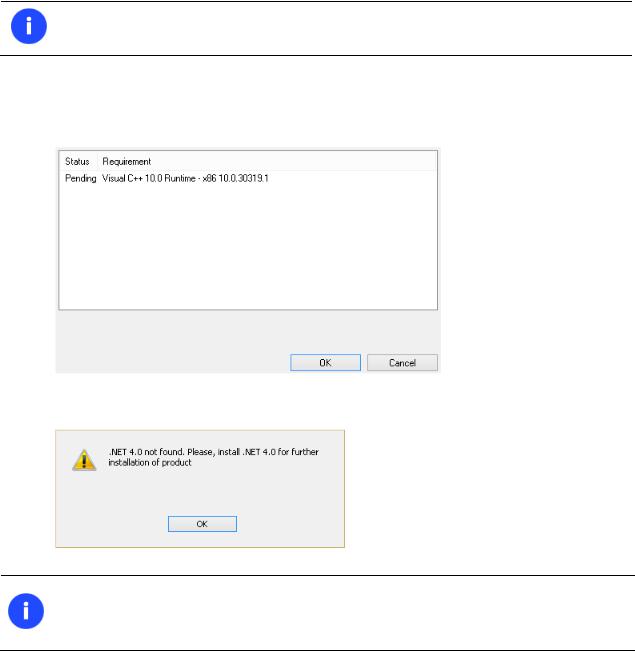
17
Keyboard
Mouse
Additional requirements
Network card to send/retrieve data to/from a network computer
Recordable CD/DVD drive to burn data to compact discs
External USB hard drive to store data.
Installation
Before the installation, please make sure the systems requirements are met. If everything is OK, please do the following to install the product:
In case there is some previous version of the program installed on the computer, the program will offer the user to uninstall it first.
1.Click on the supplied setup file to initiate the installation. First your system will be checked for the presence of Visual Studio C++ 2010 Runtime Library and if not found, you will be prompted to install it (comes with the installation package). Click Install to continue.
2.Then your system will be checked for the presence of Microsoft .NET 4.0 or later. If not found, the installation won’t continue with the corresponding warning:
You can download Microsoft .NET 4.0 from Microsoft’s website: http://www.microsoft.com/downloads/details.aspx?FamilyID=0a391abd-25c1-4fc0-919f- b21f31ab88b7&displaylang=en
3. The Welcome page will inform that the application is being installed. Click Next to continue.
Copyright© 1994-2014 Paragon Software GmbH. All rights reserved.
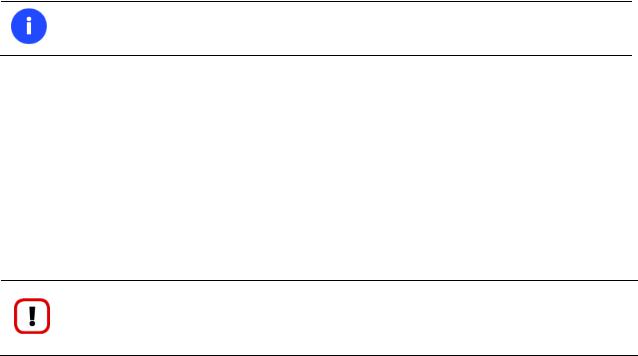
18
4.Please Read Paragon License Agreement carefully and then select the appropriate option to accept. Otherwise you won’t be able to proceed with the installation. By clicking the Print button, the license agreement may also be printed out.
5.Provide your product key and serial number.
6.On the Customer Information page you are to provide the standard customer information, i.e. a user name and an organization. Besides you need to decide whether to make the program available for all users of this computer (if several) or only for the current one.
7.On the next page, click Change to install the utility to a different location (by default C:\Program Files\Paragon Software\Paragon Hard Disk Manager 15 Premium Edition\). Otherwise click Next to continue.
Do not install the program on network drives. Do not use Terminal Server sessions to install and run the program. In both cases, the program functionality will be limited.
8.On the Ready to Install the Program page click Install to start the installation or Back to return to any of the previous pages and modify the installation settings.
9.The Final page reports the end of the setup process. Click Finish to complete the wizard.
First Start
To start Paragon Hard Disk Manager 15 under Windows, please click the Windows Start button and then select
Programs > Paragon Hard Disk Manager™ 15 > Paragon Hard Disk Manager™.
The program provides wide opportunities in the field of hard disk structure modification, so just to be on the safe side, please make a backup of your data before carrying out any operation.
The first component that will be displayed is called the Express Launcher. Thanks to a well thought-out categorization and hint system, it provides quick and easy access to wizards and utilities that we consider worth using on a regular basis. With its help you can also start up the traditional launcher, the help system or go to the program’s home page.
Copyright© 1994-2014 Paragon Software GmbH. All rights reserved.
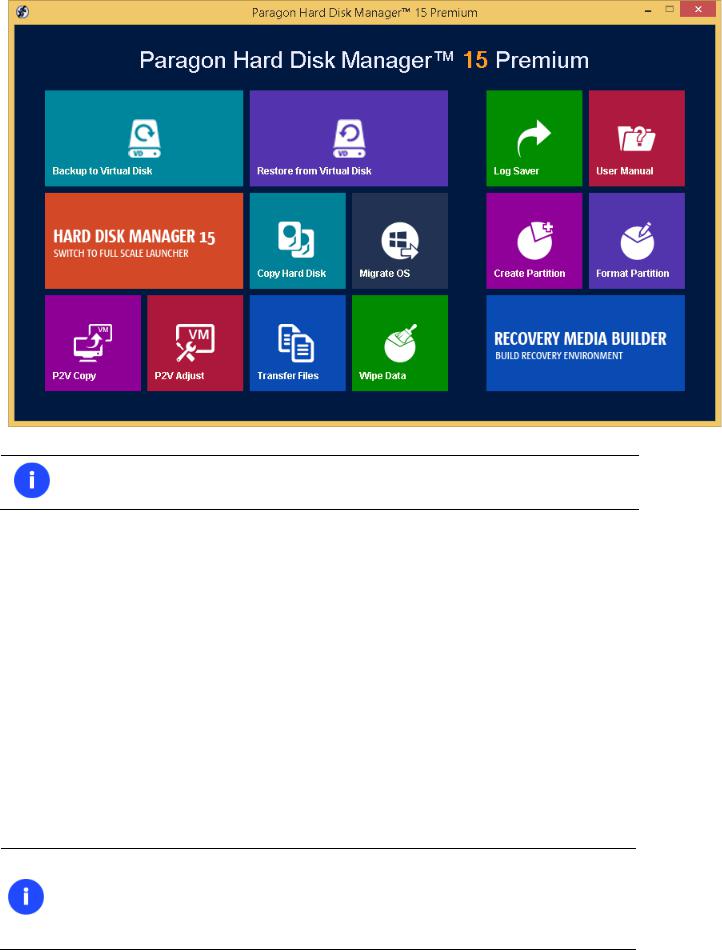
19
To know more on how to handle the product’s interface and accomplish typical operations, please consult the Windows Components chapter.
Building Recovery Media
WinPEand/or Linux-based recovery environments should be prepared on-site with Paragon’s Recovery Media Builder. To know more on the subject, please consult documentation that comes with this utility.
Booting from the Linux/DOS Recovery Media
The Linux/DOS recovery environment can be used to boot your computer into Linux or PTS DOS to get access to your hard disk for maintenance or recovery purposes. It also has the PTS DOS safe mode, which may help in a number of nonstandard situations such as interfering hardware settings or serious problems on the hardware level. In this case, only basic files and drivers (such as hard disk drivers, a monitor driver, and a keyboard driver) will be loaded.
Startup
To start working with the Linux/DOS recovery environment, please take the following steps:
1. Start up the computer from our Linux/DOS recovery media.
Please use Recovery Media Builder to prepare Paragon's recovery environments on
CD/DVD, flash, or in an ISO-image.
To automatically boot from the recovery media please make sure the on-board BIOS is set up to boot from CD/USB first.
Copyright© 1994-2014 Paragon Software GmbH. All rights reserved.
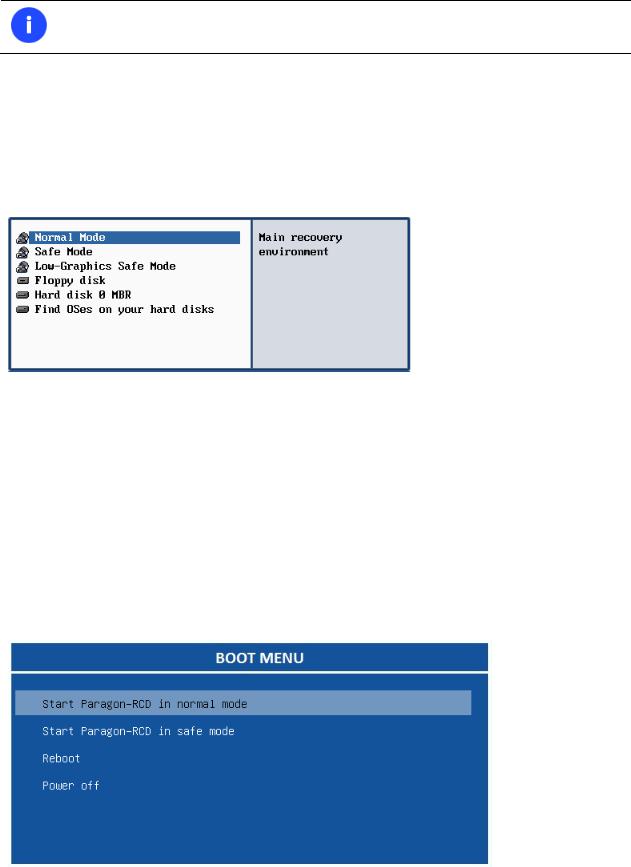
20
2. Launch a boot mode you need (Normal, Safe, Low-Graphics Safe) in the Boot menu.
By default the Normal Mode will be automatically initiated after a 10 second idle period.
3.Click on the required operation to start. Hints on the selected at the moment item will help you make the right choice.
4.Consult the help system by pressing ALT+F1 to know more on the subject.
Boot menu
32-bit environment
Normal Mode. Boot into the Linux normal mode. This mode uses the full set of drivers (recommended);
Safe Mode. Boot into the PTS DOS mode. This mode can be used as an alternative of the Linux normal mode if it fails to work properly;
Low-Graphics Safe Mode. Boot into the PTS DOS safe mode. In this case, only the minimal set of drivers will be included, like hard disk, monitor, and keyboard drivers. This mode has simple graphics and a simple menu;
Floppy Disk. Reboot the computer from a system floppy disk;
Hard Disk 0. Boot from the primary hard disk;
Find OS(s) on your hard disks. The program will scan hard disks of your computer to find any bootable operating system.
64-bit environment
Normal Mode. Boot into the Linux normal mode. This mode uses the full set of drivers (recommended);
Copyright© 1994-2014 Paragon Software GmbH. All rights reserved.

21
Safe Mode. Boot into the PTS DOS mode. This mode can be used as an alternative of the Linux normal mode if it fails to work properly;
Reboot. Restart the computer.
Power off. Shut down the computer.
While working with the recovery environment you might experience some inconvenience caused by possible video artifacts. It is just a result of changing video modes and in no way will affect the program functionality. If this is the case, please wait a bit and everything will be OK.
Normal Mode
When the Normal mode is selected, the Linux launch menu appears:
Hard Disk Manager (enables to run wizards and dialogs, to specify program settings, to visualize the operating environment and the hard disk configuration);
Simple Restore Wizard (allows restoring hard disks and partitions);
Disk Copy Wizard (helps to clone a hard disk);
Undelete Partition (allows recovery of accidentally deleted partitions);
Wipe Wizard (enables to destroy all on-disk information or only remnants of deleted files/directories);
Express Resize Wizard (enables to increase free space on one partition by up-taking the unused space of an adjacent partition);
File Transfer Wizard (allows coping files/folders to another disk or a partition as well as recording them to CD/DVD);
Boot Corrector (helps to correct the Windows System Registry without Windows being loaded);
Network Configurator (enables to establish a network connection under Linux);
Copyright© 1994-2014 Paragon Software GmbH. All rights reserved.

22
If you are going to use network resources, first launch the Network Configuration Wizard to establish a network connection.
Log Saver (helps to collect and send the necessary log files to the Technical Support);
View the mounted partitions (the list of all mounted partitions will be displayed);
The Linux/DOS recovery environment assigns drive letters to partitions the way it is done in DOS, i.e. one after another, primary partitions at first. Thus mounted partitions may have different drive letters from Windows.
Eject CD/DVD;
Command Line (allows experienced users to execute any operation);
Reboot the computer;
Power off the computer.
To move within the menu, please use the arrow keys of the computer keyboard.
Safe Mode
When the Safe mode is selected, the PTS DOS launch menu appears. It has nearly the same functionality as for the Normal mode except for the Network Configurator and Log Saver commands. Besides due to certain limitations of the PTS DOS environment, there is no possibility to burn CD/DVD discs.
Low Graphics Safe Mode
When the Low Graphics mode is selected, the PTS DOS launch menu appears. It has the same functionality and looks similar to the Safe mode but graphically simpler.
Booting from the WinPE Recovery Media
The WinPE recovery environment can be a real alternative to the Linux/DOS recovery environment. Providing nearly the same level of functionality it offers an excellent hardware support and the same interface as the Windows version does.
Startup
To start working with the WinPE recovery environment, please take the following steps:
1. Start up the computer from the WinPE recovery media.
Copyright© 1994-2014 Paragon Software GmbH. All rights reserved.
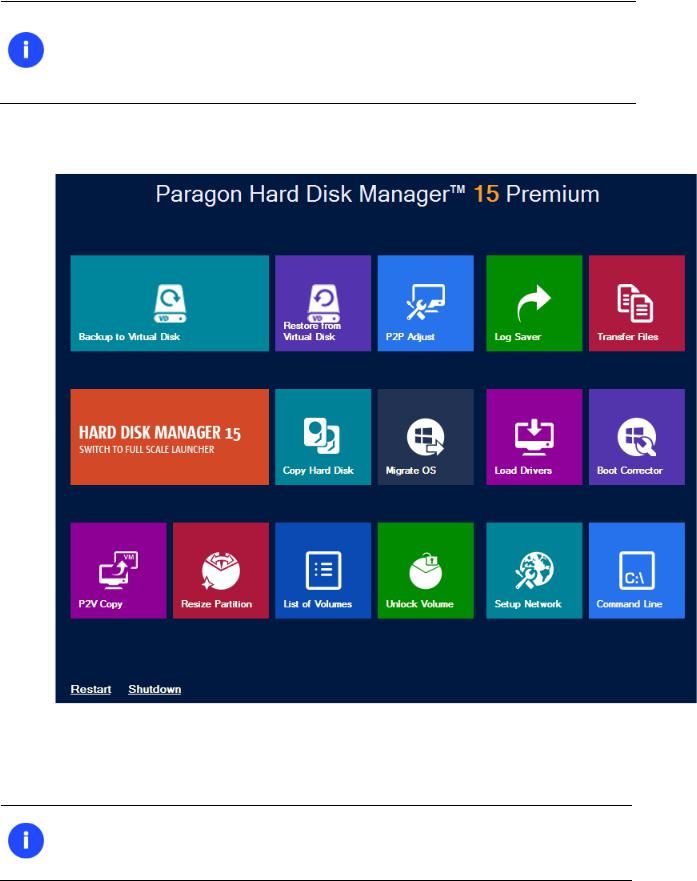
23
Please use Recovery Media Builder to prepare Paragon's recovery environments on
CD/DVD, flash, or in an ISO-image.
To automatically boot from the recovery media please make sure the on-board BIOS is set up to boot from CD/USB first.
2.Once it has been loaded, you will see the Universal Application Launcher. In general it enables to run components of the product, load drivers for undefined hardware or establish a network connection.
3.Click on the required operation to start. Hints on the selected at the moment item will help you make the right choice.
4.Consult the help system by pressing ALT+F1 to know more on the subject.
The WinPE based recovery environment offers excellent hardware support. However in case it doesn’t have a driver for your disk controller, your hard disks will be unavailable. Please consult the Adding specific drivers scenario to know how to tackle this issue.
Copyright© 1994-2014 Paragon Software GmbH. All rights reserved.

24
Basic Concepts
This chapter explains terms and ideas that show how the program works. To understand these helps to obtain a general notion of the operation performance and makes it easier for the user to operate the program.
System and Data Protection
The data protection issue is a growing cause of worrying for more and more people today. Indeed, it is hardly to find a person who will be particularly happy when all precious information on the hard disk is irreversible lost as a result of its malfunction. So how this tragedy can be prevented?
File Backup versus Sector Backup
Since the advent of the computer age people were in the search of ways to guarantee data safety. As a result we’ve got now two principal approaches: the file-based backup and the sector-based backup. The main difference between the two lies in the way data is treated.
A sector-based backup operates with an image (or a snapshot) of the whole disk system or its separate partitions. It not only includes the contents of all user-made files, but additionally contains the exact structure of directories, information about file allocation, file attributes and other related data. Thus it enables to successfully process system or encrypted partitions of any file system type, no matter what kind of information they contain.
In contrast, a file-based backup takes into account a file system structure and only functions on a file or folder level. So it is very efficient when archiving separate files or folders, but in no way will help you back up a system partition.
You should understand pretty well that each of the two approaches is only good when properly chosen. In the comparison table below you can see when this or that approach will suit you at most.
Sector-Based Backup |
File-Based Backup |
Merits
It does not dependent on a particular file system. Thus it can successfully process system or encrypted partitions of any file system type, no matter what kind of information they contain.
Functioning on a file/folder level, it is ideal for archiving separate files or folders.
It can create an exact image of a partition, |
It enables to automatically build up contents of |
including its service data. Thus it is ideal for a |
the future backup image by using an advanced |
backup/restore of a system partition or a fast |
system of filters. |
deployment to a bunch of identical computers. |
|
|
|
|
It allows archiving data of the same volume with |
|
different backup policies. |
|
|
|
It is easy and efficient when creating backup |
|
chains. |
|
|
Demerits |
|
|
|
Resulted backup images may contain a lot of |
It depends on a file system structure, so you |
redundant data. |
won’t be able to process unknown file systems. |
|
|
It is ineffective when trying to maintain a backup |
It cannot be used to back up a system partition. |
chain, especially when little amount of data is |
|
|
|
Copyright© 1994-2014 Paragon Software GmbH. All rights reserved.
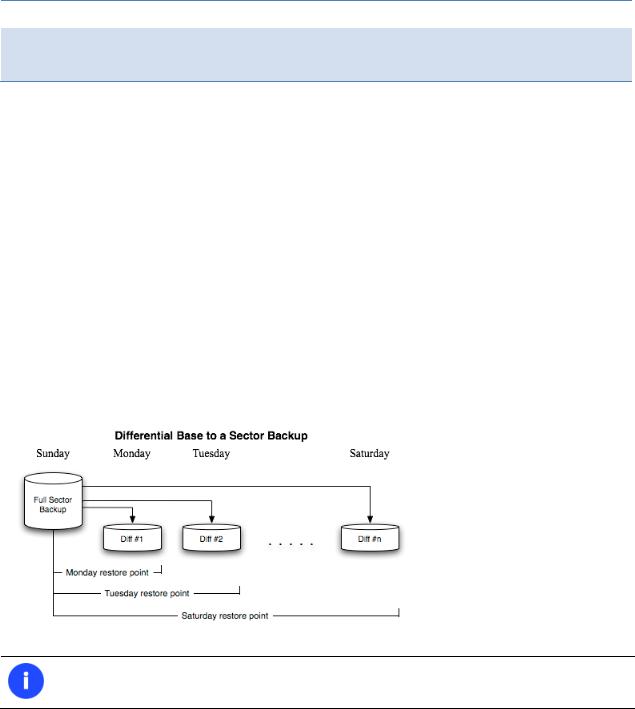
25
being changed.
It is much slower when processing large amount of data.
Backup Types
At the present moment the market is offering various types of backup imaging to meet the needs of any user. Besides supporting them all, our program offers a unique backup type, called File Increment to a Sector Backup.
Full, Differential, and Incremental Sector Backups
A full sector-based backup image includes all contents of a partition or a hard disk at the moment of its creation. If you roll back your system to the initial state on a regular basis, that’s exactly what you’re looking for. But if you want to have multiple backup archives of the same partition reflecting certain time stamps, unchanged data will inevitable be duplicated in all archives and take additional space on backup media. To tackle this issue there has been developed a supplementary technique called Differential Sector Backup.
A differential archive only contains data changed since the time of creating a full archive, which forms a base (or a parental image) in this case, thus considerably saving your system resources. It is realized by the exact bit-wise comparison of the previous partition's data (saved in the parental image) with the current data (that is actually the partition itself). To restore this kind of backup you will require a full image and one of its differentials, what is very convenient.
This function is only available for single primary and logical partitions.
Incremental archive is a further way of optimizing the process of disk imaging. Unlike differentials, it may not only contain data changed since the time of creating a full sector-based archive, but one of its increments as well, thus allowing to save more time and the backup storage. The main principal here is the shorter the interval between increments, the less data is backed up. In general this type of backup is great except for one thing – when you restore an incremental archive there will be processed the initial full image and all increments between, which depending on the size of your backup chain, may take plenty of time. Anyway unlike backups, the restore operation is an emergency, which might not happen at all.
Paragon’s incremental sector-based archive employs an innovative technology that significantly improves the backup performance. Its core is in introduction of a special index file (.pfi) that keeps meta-information on the corresponding incremental image. It’s much smaller than the image itself and is used to calculate the difference between the current and previous state of a backup object. Thus, when you’re going to do an increment to a full archive of your system
Copyright© 1994-2014 Paragon Software GmbH. All rights reserved.
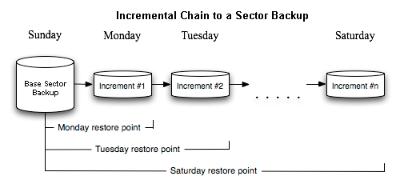
26
partition stored on the network, only its index file is processed over the net (a couple of megabytes at most), not the entire image, which minimizes both, the network traffic and backup time. Another new thing is change of a backup format – all increments are saved in .vhd (Virtual Hard Drive) containers.
Please note that the current version of the product has a number of limitations regarding sector-based increments:
Increments can only be created for full archives of the new type (with a .pfi index file). Any of our flagship products since Hard Disk Manager 12 supports this functionality;
Increments can only be created for full archives stored on a local mounted drive or a network share;
Increments cannot be created for archives of entire GPT disks;
Increments can only be restored under Windows (if no restart is needed) or WinPE;
Increments cannot be processed with the Synthetic Backup Wizard;
Increments cannot be processed with the Check Archive Integrity Wizard;
Increments cannot be processed with the Create File Complement Wizard;
Increments cannot be browsed in Volume Explorer;
Increments can only be used with our software;
Increments cannot be compressed;
Increments cannot be encrypted;
Increments cannot be splitted.
Full and Incremental File Backups
A full file-based archive only contains files and folders. It is really efficient when backing up an e-mail database or particular documents, as no redundant data is processed. But if you care about maintaining a files history, you can benefit from one more supplementary technique called Incremental File Backup.
An incremental archive only contains data changed since the time of creating a full or incremental file-based archive. It is smaller and takes less time to create, but you will require the initial full image and all of its increments to restore the latest point of this kind of backup.
Copyright© 1994-2014 Paragon Software GmbH. All rights reserved.

27
File Increment to a Sector Backup
File Increment to a Sector Backup is a unique technology on the market so far that bridges two principally different approaches of the data backup: the file-based backup and the sector-based backup. With its help you can now create a sector-based backup of your system to get it back on track in minutes in case of a virus attack or a hardware malfunction and then just make file-based incremental images to the previously created sector-based backup to keep updated only information that is critical for you. Thus you will considerably save your system resources.
Backup Storage
Our program supports several techniques of storing backup images. Let’s take a closer look at them all to understand what kind of storage is able to provide better security:
You can place a backup image to a local partition. Despite the fact that it is the most convenient way, try not to use it. You can delete your backup just by accident or lose it as a result of a hardware malfunction, or a virus attack;
You can place a backup image to an external mounted storage to provide for a higher level of data protection and system independence;
You can place a backup image to a special secured place on the hard disk called the Backup Capsule that has an independent system layout (e.g. a separate partition) and will stay operable should the active file system be damaged. To avoid an accidental removing or unauthorized access of the backup data, this partition is hidden and thus cannot be mounted in the operating system. However it won’t help you in case of a hardware malfunction;
You can place a backup image to external media (CD/DVD) to guarantee a high level of data protection as long as the backup media is kept secure;
You can place a backup image to a network drive to stand a better chance of success in case of a hard disk failure. Moreover, by storing it on a special-purpose server you may be pretty sure nothing will happen to it;
Finally you can place a backup image to an FTP server to provide a new level of system and data protection.
Known Issues on FTP/SFTP
1.You need to check out yourself Windows Firewall or programs of this kind let our program work with the required port (21 by default).
2.You cannot restore data selectively (with Restore Wizard) from an FTP/SFTP server.
3.You can browse an FTP server in the passive mode only.
4.Parallel access to several FTP/SFTP servers is limited - only one password for all servers is available.
Copyright© 1994-2014 Paragon Software GmbH. All rights reserved.
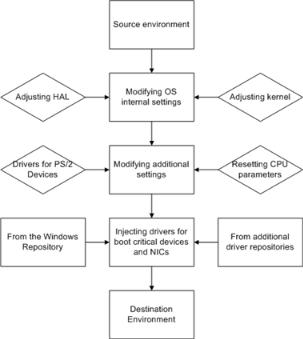
28
Adaptive Restore
Technology Background
Windows family operating systems are notorious for their excessive sensibility to hardware, especially when it turns to replacement of such a crucial device as HDD controller or motherboard – actually Windows will most likely fail to boot as a result of this operation.
In 2008 our company came with an exclusive technology called Paragon Adaptive Restore™. Initially aimed at restore of Windows Vista or Server 2008 from a backup to a different hardware configuration, its current realization, available in the P2P Adjust OS Wizard, enables to make any Windows OS since XP bootable on dissimilar hardware by allowing automatic injection of all required drivers and the other actions crucial for this type of migration.
Technology Concept
Let’s take a closer look at how Paragon Adaptive Restore works.
As you see, successful migration of a Windows system to a different hardware platform involves several actions:
1.Change of the Windows kernel settings according to the new configuration. The program detects the given hardware profile and automatically installs the appropriate Windows HAL and kernel.
2.Installation of drivers for boot critical devices. The program detects those without drivers and automatically tries to install lacking drivers from the built-in Windows repository. If there’s no driver in the repository, it prompts the user to set a path to an additional driver repository, strongly recommending not to proceed until all drivers for the found boot critical devices are installed. In case drivers for these devices are installed, but disabled, they will be enabled.
3.Installation of drivers for a PS/2 mouse and keyboard. This action will only be accomplished for Windows XP/Server 2003.
4.Installation of drivers for network cards. The program detects those without drivers and automatically tries to install lacking drivers from the built-in Windows repository. If there’s no driver in the repository, it prompts the user to set a path to an additional driver repository.
Copyright© 1994-2014 Paragon Software GmbH. All rights reserved.

29
These actions guarantee a Windows system will start up on dissimilar hardware. After the startup, Windows will initiate reconfiguration of all Plug'n'Play devices. It’s a standard procedure, so please don’t worry and prepare the latest drivers at this step to get the most out of the system.
Though all Windows systems have built-in driver repositories, please be prepared to have additional drivers when dealing with Windows XP/Server 2003, because for these systems they are very modest.
Technology Application
Let’s consider a number of situations when the Adaptive Restore technology can help you out:
If you need to migrate to a different hardware platform with minimal effort
If you need to upgrade hardware while keeping all programs and settings intact
If you need to replace failed hardware and cannot find an exact match for original system specifications
Known Issues
1.After transferring Microsoft Vista and later versions to different hardware, you will need to re-activate license of the system. It’s normal behavior as these systems keep tracking any change of hardware. Re-activation is legally justified in this case, as you transfer your system to another PC.
2.If you’ve installed several operating systems on one partition, we can only add drivers to the latest version of
OS. Microsoft highly recommends that you install an operating system on a separate partition.
3.Please note drivers are not cached during selection. That’s why if you select a driver to add to the system, but it’s already unavailable during the operation, the program will end the operation with an error.
System Virtualization
With new powerful x86 computers, system virtualization has become extremely popular. It’s a software technology that enables to run several virtual machines on one physical machine, providing resources of that single computer are shared across several environments. As a result one and the same physical computer can have multiple OSs and applications operating simultaneously, thus opening up enormous opportunities for both, business and home users, exactly:
Avoid underutilization of up-to-date powerful computers;
Increase flexibility of a physical infrastructure;
Provide for increased availability of hardware and applications;
Cut expenses on hardware and energy;
Guarantee smooth and cost saving system migration;
Enjoy working with old applications you can’t launch on your current PC;
Take advantage of having multiple operating systems on one Windows PC, including Linux, Mac OS X, etc.;
Forget about hunting for replacement of the failed hardware, and many more…
Copyright© 1994-2014 Paragon Software GmbH. All rights reserved.

30
Known Issues
1.You should install integration services (e.g. VMware Tools) on the virtual system yourself. We only guarantee its smooth startup.
2.After transferring Microsoft Vista and later versions to a virtual disk, you will need to re-activate license of the system. It’s normal behavior as these systems keep tracking any change of hardware. Re-activation is legally justified in this case, as you transfer your system to another PC.
3.If your system hosts several Windows OSes, our program will find them all and automatically patch to run in a virtual environment. However we cannot guarantee smooth startup of all found Windows systems, but the guest OS, for its configuration parameters may be incompatible with the others.
Paragon Hot Processing & Volume Shadow Copy Service
Offline versus Online Data Processing
In the course of time there have been developed various methods of data processing. Despite different work concept, all of them can be divided into two principal groups: offline (cold) and online (hot) data processing techniques.
As the name infers, offline data processing can only be accomplished when the data is in consistent state (the operating system and all the applications are completely shut down). Actually it is the most preferable way of image creation or data cloning, since software can obtain an exclusive right to process data that guaranties high level of operating efficiency. However, the offline data processing is absolutely out of question when dealing with 24/7 production environments.
In contrast, online data processing enables to create a consistent snapshot even as the data is currently modified. It is particularly useful for systems with high availability requirements, but it won’t be accomplished until all active transactions are complete. The point is to provide a coherent state of all open files and databases involved in a process, taking into account that applications may still keep writing to disks. As a result an online data processing cannot boast high operating speed.
Our program supports both offline and online methods of data processing. As far as online method is concerned it offers its own hot processing algorithm together with the possibility to use snapshot technologies provided by the Microsoft VSS framework.
Paragon Hot Processing Technology
Paragon Hot Processing is an online copy/backup technology for Windows NT+ family operating systems. Developed back in 2001, nowadays it is integrated with all copy/backup solutions offered by the company.
Paragon Hot Processing is not exactly a snapshot technology, though it has much in common with it. During an online copy/backup, the program uses the kernel mode driver HOTCORE.SYS to intercept and control disk write activity of applications and the operating system. The hotcore driver as an integral part of the program is installed during the setup procedure (that’s why the system reboot is required to complete the setup procedure). For the most part the driver is in the idle mode until it is activated with the program. While in this mode it bypasses any calls having no effect on the overall system performance, but a few kilobytes of the system memory.
Paragon Hot Processing technology offers copy/backup of locked partitions and hard disks under Windows NT+ family operating systems providing both high operating efficiency as well as low hardware requirements.
It is not recommended to use Paragon Hot Processing with active SQL Server, Exchange or Oracle databases since the backup image contents may be corrupted.
Copyright© 1994-2014 Paragon Software GmbH. All rights reserved.
